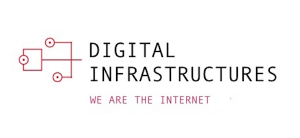In the course of the German federal government’s planned Energy Efficiency Act, politicians and the Internet industry have recently been intensively discussing how providers of the digital infrastructure ecosystem can further improve their energy efficiency in Germany. A particular focus here has been on the data centre industry and the requirements for waste heat delivery.
The potential is clear: if the waste heat from data centres is used consistently, all residential and office spaces in Frankfurt – home to more than 60 data centres and the largest Internet Exchange –could, for example, be heated in a CO2-neutral manner by 2030.
Waste heat from data centres must not be allowed to fizzle out unused
Since its inception in 2018, the Alliance for the Strengthening of Digital Infrastructures in Germany, founded under the umbrella of the eco Association, has been highlighting this potential: Waste heat from data centres must not be allowed to fizzle out unused, and political and technical framework conditions are needed to improve the utilisation of waste heat from data centres. In concrete terms, what this means is the following: expanding local and district heating networks, improving technical systems for waste heat utilisation, creating purchase obligations for heating network operators, as well as developing utilisation options in both cities and rural areas.
The draft of a German Energy Efficiency Act by the Federal Ministry for Economic Affairs and Climate Action, which was made public in November 2022, called on data centres to deliver their waste heat, but this was done to a completely unrealistic extent. Sufficient heating networks or perhaps a market of customers? Not a chance. This was all the more unfortunate since the Climate Neutral Data Centre Pact has long been an international declaration of commitment by the industry to make data centres climate-neutral by 2030. This is embedded in the Energy Efficiency Directive for Europe, which is currently being coordinated.
Even so, the German federal government and the data centre industry pursued the same goal from the very outset: to make new data centres, in particular, as energy-efficient as possible and to utilise waste heat as much as is achievable.
While theory and practice were too far apart for several months in the first drafts of the Energy Efficiency Act, in the end the parliamentarians of the German Bundestag did a great job. They took the concerns of the industry on board, and presented a more practical solution for the final adjustment that strengthens the sustainability goals, positions Germany as a pioneer in the energy efficiency of data centres and, at the same time – through at least a more balanced regulatory approach – tries not to make the location for data centres completely unattractive. Thus, an act that was initially poorly crafted could ultimately become a healthy regulation for more sustainable digitalisation in Germany – that is, if the act is now quickly passed in September after the overturned vote in the German Bundestag in the last session before the parliamentary summer break.
Energy Efficiency Act strengthens the environmental footprint of digitalisation
As of today, the Energy Efficiency Act can be considered as a success for climate protection.
This is due first and foremost to the Power Usage Effectiveness (PUE) that is enshrined in the act. It indicates how effectively the energy supplied to a data centre will be consumed. The closer the PUE value approaches the theoretical value of 1.0 for commercial data centres, the more energy-efficient the data centre is, and the better its energy balance.
With a PUE value of 1.2, the ambitious target of the Energy Efficiency Act is now significantly below the European requirements (1.3). Germany is therefore playing a pioneering role in terms of sustainability and energy efficiency, which the data centre sector is now supporting in the best possible manner.
Second point: The mandatory waste heat delivery from new data centres in operation from July 2026 onwards remains in place. The staggered flat rates of 10, 15 and then 20 per cent until 2028 have not been recently changed.
In addition, the planning of data centres are now to include the possibility of waste heat delivery from the outset through more stringent exemption regulations. Through the so-called readiness approach, operators are then in a position, if required, to release their waste heat at an acceptable, timely, technical and commercial level.
Thirdly, there is still the obligation to use renewable energies for the operation of the data centres. The only problem in Germany is that the amounts of electricity made available from renewable energies are not yet sufficient for 24/7 operation throughout the country.
In addition, what also remains in place are the documentation obligations for the operators of data centres – for example, in terms of energy consumption, efficiency of the cooling system, amount of waste heat or water use of data centres. However, these obligations are now more oriented towards the European Energy Efficiency Directive (EED). What’s more, operators are now no longer forced to disclose their trade secrets, but to share them concretely with their customers.
With this portfolio of specifications and regulatory approaches, data centres in Germany will significantly improve the environmental footprint of digitalisation, far exceeding the specifications currently being prepared for the industry in Europe.
But challenges remain: Without sufficient renewable energies, a nationwide fibre-optic network and broad 5G coverage for mobile Internet in Germany, it will not be possible to maximise the potential for sustainability at the infrastructure level.
We will therefore continue to advocate for this in the future via the Alliance for the Strengthening of Digital Infrastructures in Germany.




